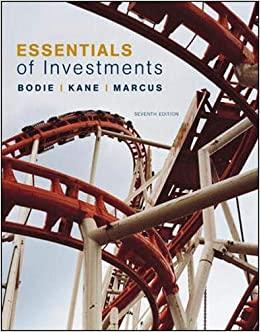Question
1. Look up the current risk-free rate (use one-year treasury rates) and any bond yield and tax rate data for Nike Inc. If you cant
1. Look up the current risk-free rate (use one-year treasury rates) and any bond yield and tax rate data for Nike Inc. If you cant find Nike Incs bond yields look up their bond rating and try to find current bond yields for bonds with ratings at that level. If there is preferred stock outstanding, get that data as well.
It is used as a benchmark in valuation models to predict the value of assets including equities, real estate, infrastructure, and fixed income investments by providing investors with a "risk free rate of return." One definition of the "risk-free rate" is the rate of return on an investment with no potential for loss. Since every monetary item, no matter how small, entails some degree of risk, the concept of the "risk-free rate" is somewhat hypothetical.
People generally think it means the interest rate on short-term government debt. Specifically, the risk-free interest rate is assumed to correspond to the interest rate paid on a three-month Treasury bill, which is considered one of the safest investments available. Typically, the risk-free rate is the yield on long-term government bonds or the current rate on Treasury bills. In light of the fact that T-bills have the full support of the US government, default risk is considered to be minimal at best. Risk-free investments include bonds issued by governments that are able to either increase taxes or produce new revenue to reduce the amount of debt denominated in the country's own currency. Investments in US Treasury notes and bonds, for instance, are widely understood to be risk-free.
2.) Using the collected information Calculate the cost of equity, cost of debt and cost of preferred of Nike Inc.
When held to maturity, Treasury bonds are considered a risk free investment due to the stability of the US government and economy. The yields on Treasury bonds are lower than those on higher-risk products like stocks. Treasury bills, notes, and bonds issued by the United States Department of Treasury are safe investments because they have the "full faith and credit" of the United States government. The return on risk-free assets is close to the market interest rate because of how safe they are. An investor's return on a bond investment is referred to as the bond yield. Bonds can be purchased at either a premium (above their face value) or a discount (below their face value). The bond's current yield is its annualized return. Despite the high rate of inflation, today is a good time to invest in a government-issued I bond. Series I savings bonds give a much higher yield than even the best high-yield savings account or certificate of deposit. Series I savings bonds are a cautious, inflation-linked investment option. Divide the current market price by the coupon rate to get the coupon rate. Treasury bills have a maximum maturity of one year and do not accrue interest until that time has elapsed. They are sold at auction for prices below their face values. For short-term financing needs, a Treasury bill may be the most convenient solution because of its shorter duration. Investors with a ten-year perspective or more may find Treasury bonds to be the best option.
Can you please help with the calculations and actual question in regard to Nike, Inc. I asked this question already but did not receive a direct answer for #1 or help with the calculations for #2.
Step by Step Solution
There are 3 Steps involved in it
Step: 1

Get Instant Access to Expert-Tailored Solutions
See step-by-step solutions with expert insights and AI powered tools for academic success
Step: 2

Step: 3

Ace Your Homework with AI
Get the answers you need in no time with our AI-driven, step-by-step assistance
Get Started


